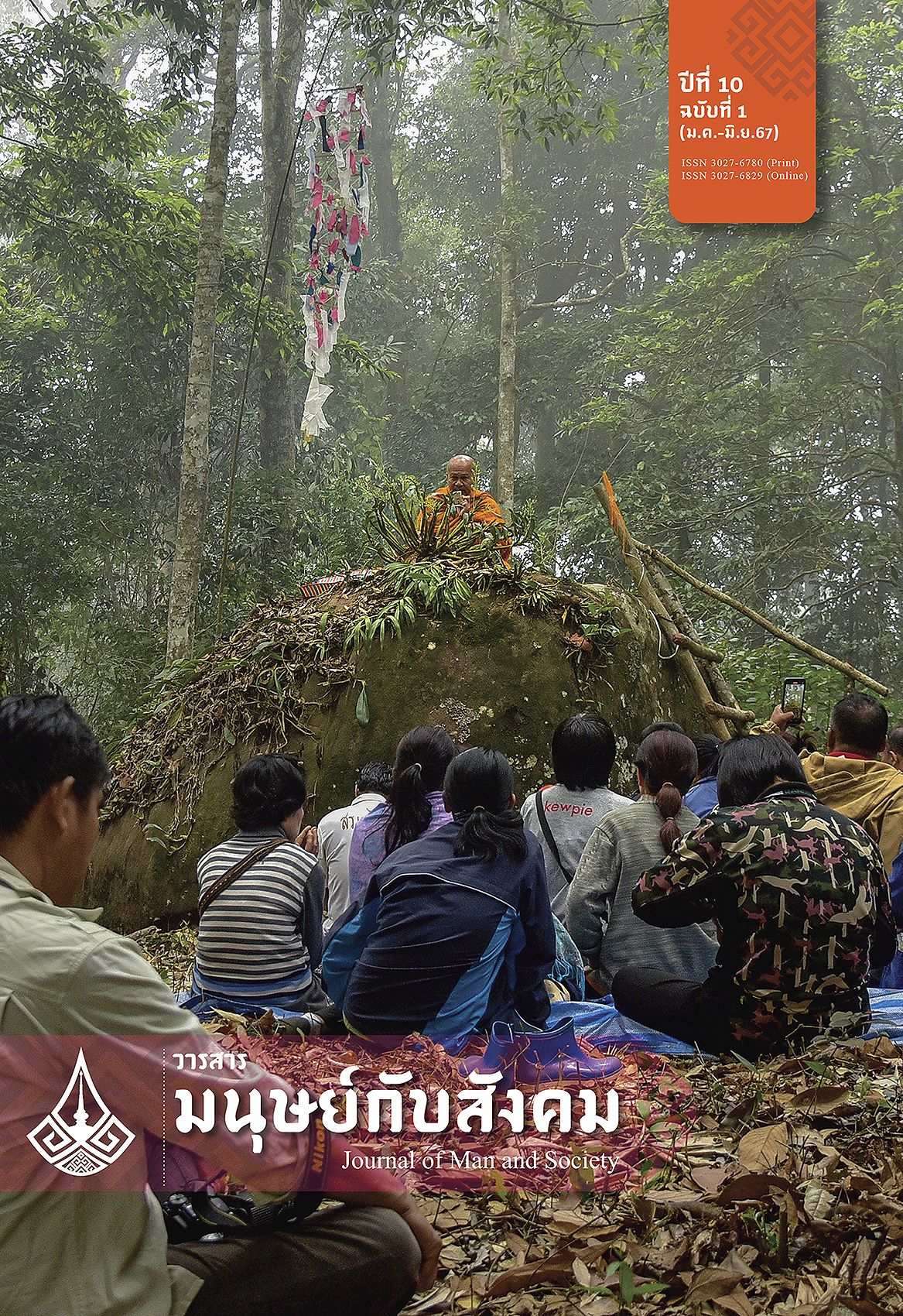The Development of Malay Grammar Competence on the Topic of Affix of Second-Year Students at Yala Rajabhat University with the Use of the Digital Book on Verb Formation
Main Article Content
Abstract
The advancements in technology during the 4.0 era and the challenges in digital education have transformed traditional learning into online. Therefore, this research aims to explore the learning achievement in Malay grammar on affixes and the satisfaction of using the digital book on verb formation. The research samplings include 32 students enrolled in the Grammar for Malay Teachers 1 course in the first semester of the academic year 2023 at Yala Rajabhat University. The research method was a basic experimental research designed as (One Group Pretest Posttest Control Group Design). Data were analyzed using the SPSS program to determine the achievement result with averages, standard deviation, and t-test values. The research instruments included digital books on verb formation, achievement tests and satisfaction assessment forms. The research findings indicated 1) a significant increase in achievement rates, surpassing previous levels, with statistical significance at .05, and 2) the overall satisfaction of utilizing the digital book resulted in high among learners (x̅ = 4.36). These results reflect that digital books could foster students’ engagement, enjoyment, and self-directed learning. Furthermore, it aids students in acquiring a deeper understanding of Malay grammar. This indicates that learning with digital books enhancing Malay language skills in verb formation can be a part of teaching and important in managing online teaching.
Article Details

This work is licensed under a Creative Commons Attribution-NonCommercial-NoDerivatives 4.0 International License.
เนื้อหาและข้อมูลที่ตีพิมพ์ลงในวารสารมนุษย์กับสังคม ถือเป็นข้อคิดเห็นและความรับผิดชอบโดยตรงของผู้เขียนซึ่งกองบรรณาธิการวารสารไม่จำเป็นต้องเห็นด้วยหรือร่วมรับผิดชอบใดๆ
บทความ ข้อมูล เนื้อหา รูปภาพ ฯลฯ ที่ได้รับการตีพิมพ์ในวารสารมนุษย์กับสังคม ถือเป็นลิขสิทธิ์ของวารสาร หากบุคคลหรือหน่วยงานใดต้องการนำทั้งหมดหรือส่วนหนึ่งส่วนใดไปเผยแพร่ต่อต้องอ้างอิงวาสาร
References
Bernard, R. M., Borokhovski, E., Schmid, R. F., Tamim, R. M., & Abrami, P. C. (2014). A meta-analysis of blended learning and technology use in higher education: from the general to the applied. Journal of Computing in Higher Education, 26(1), 87-122.
Gagne, R. M. (1985). The conditions of learning and theory of instruction (4th ed.). Holt, Rinehart, and Winston.
Masae, A., Baleh, S., & Tamphu, S. (2020). The development of Malay lessons for travelers in Thai-MOOC of Malay language for communication course, Yala Rajabhat University. Journal of Yala Rajabhat University, 16(2), 258-266.
Masae, A., & Hasbulloh, N. (2021). Developing innovative digital books in Malay language on the topic of verbs construction for Malay language teaching students, Yala Rajabhat University. Journal of Information and Learning, 32(1), 1-16.
Means, B., Bakia, M., & Murphy, R. (2014). Learning online: what research tells us about whether, when and how. Routledge.
Mueangkaew, S. & Aphiratvoradej, K. (2018). Development of electronic book (E-book) on neighboring countries language and culture course for first year students in Bansomdejchaopraya Rajabhat University. CMU Journal of Education, 2(1), 18-32.
Nurul Ain, A. & Nik Nur Athirah, N. M. A. (2021). Error analysis in international students’ Malay language written compositions. International Social Science and Humanities Journal, 4(1), 113-127.
Panyaamornwat, Th., & Suthithanakul, A. (2014). Development of multimedia media for teaching basic Chinese language. The Panyapiwat Academic Conference no. 4 (34-43). Panyapiwat Institute of Management.
Wayo W., Charoennukul A., Kankaynat Ch., & Konyai J. (2020). Online learning under the COVID-19 epidemic : concepts and applications of teaching and learning management. Regional Health Promotion Center 9 Journal, 14(34), 285-298.
Waenasae, R., Napapongs, W., Kaosaiyaporn, O., & Tehhae, I. (2020). Effects of using augmented reality for improving learning achievementon Arabic consonant pronunciation of grade 3 students. Journal of Information and Learning, 31(3), 11-21.


